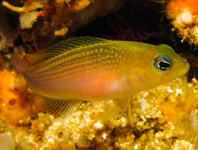Abstract
Crickets of the genus Teleogryllus belong to Gryllidae, Orthoptera. Teleogryllus emma (Ohmachi and Matsumura) and T. occipitalis (Serville) are widely distributed in east Asia, but their distribution and life history have not been reported from China. We studied the seasonal and geographical adaptation by rearing these crickets and measuring specimens. The main results are as follows: T. emma belongs to short-day type, which means nymphs grow rapidly in short day conditions (LD 12:12); T. occipitalis belongs to long-day type, which means nymphs grow rapidly in long day conditions (LD 16:8). The nymphal growth rate accelerates with the increase of temperature by comparing their nymph developmental period at 25 and 30OC. T. emma is mainly distributed in the north of the Yangtze River, while T. occipitalis in the south of it. The body size decreases with the increase of latitude in both species, while the relative length of their ovipositor increases.
References
Bentley, D.R. & Hoy, R.R. (1972) Genetic control of the neuronal network generating cricket (Teleogryllus Gryllus) song patterns. Animal Behaviour, 20, 478–492.
https://doi.org/10.1016/S0003-3472(72)80012-5Blanckenhorn, W.U., Hellriegel, B., Hosken, D.J., Jann, P., Altwegg, R. & Ward, P.I. (2004) Does testis size track expected mating success in yellow dung flies? Functional Ecology, 18, 414–418.
https://doi.org/10.1111/j.0269-8463.2004.00864.xHe, Z.Q. & Takeda, M. (2014) The influence of developmental days on body size and allometry of head width in male Loxoblemmus angulatus (Orthoptera: Gryllidae). Canadian Entomologist, 146, 590–597.
https://doi.org/10.4039/tce.2014.10Li, X.Q., Liu, F., Zhang, J., Wang, Y.L. & Ren, B.Z. (2011) A survey of taxonomic studies on superfamily of crickets in China. Journal of Beihua University, 12, 37–42.
Loher, W. & Rence, B. (1978) The mating behavior of Teleogryllus commodus (Walker) and its central and peripheral control. Ethology, 46, 225–259.
Ma, L.B., He, Z.Q. & Zhang, Y.L. (2015) Taxonomy of Teleogryllus Chopard from China and description of alien species Teleogryllus commodus. Journal of Shaanxi Normal University, 3, 57–63.
Masaki, S. (1965) Geographic variation in the intrinsic incubation period: a physiological cline in the Emma field cricket (Orthoptera: Gryllidae: Teleogryllus). Bulletin of. Faculty Agriculture of Hirosaki University, 11, 59–90.
Masaki, S. (1966) Photoperiedism and geographic variation in the nymphal growth of Teleogryllus yezoemma (Orthoptera: Gryllidae). Japanese Journal of Entomology, 34, 277–288.
Masaki, S. (1967a) Geographic variation and climatic adaptation in a field cricket (Orthoptera: Gryllidae). Evolution, 21, 725–741.
https://doi.org/10.1111/j.1558-5646.1967.tb03430.xMasaki, S & Ohmachi, F. (1967b) Divergence of photoperiodic response and hybrid development in Teleogryllus (Orthoptera: Gryllidae). Kontyu, 35, 83–105.
Masaki, S. (1979) Climatic adaptation and species status in the lawn ground cricket. Oecologia, 43, 207–219.
https://doi.org/10.1007/BF00344771Masaki, S., Ando, Y. & Watanabe, A. (1979) High temperature and diapause termination in the eggs of Teleogryllus commodus (Orthoptera: Gryllidae). Japanese Journal of Entomology, 47, 493–504.
Masaki, S., Kataoka, M., Shirato, K. & Nakagahara, M. (1987a) Evolutionary differentiation of right and left tegmina in crickets. Evolutionary Biology of Orthopteroid Insects, 1987, 347–357.
Masaki, S. & Walker, T. J. (1987b) Cricket life cycles. Evolutionary Biology, 21, 349–423.
https://doi.org/10.1007/978-1-4615-6986-2_11Masaki, S. (1996) Geographical variation of life cycle in crickets (Ensifera: Grylloidea). European Journal of Entomology, 93, 281–302.
Masaki, S. (2002) Ecophysiological consequences of variability in diapause intensity. European Journal of Entomology, 99, 143–154.
https://doi.org/10.14411/eje.2002.022Mousseau, T.A. (1997) Ectotherms follow the Converse to Bergmann's Rule. Evolution, 51, 630–632.
https://doi.org/10.1111/j.1558-5646.1997.tb02453.xOhmachi, F. & Matsuura, I. (1951) On the Japanese large field cricket and its allied species. Bulletin of the Faculty Mie University, 2, 63–72.
Pollack, G.S. (1986) Discrimination of calling song models by the cricket, Teleogryllus oceanicus: the influence of sound direction on neural encoding of the stimulus temporal pattern and on phonotactic behavior. Journal of Comparative Physiology A, 158, 549–561.
https://doi.org/10.1007/BF00603799Shackleton, M.A., Jennions, M.D. & Hunt, J. (2005) Fighting success and attractiveness as predictors of male mating success in the black field cricket, Teleogryllus commodus: the effectiveness of no-choice tests. Behavioral Ecology and Sociobiology, 58, 1–8.
https://doi.org/10.1007/s00265-004-0907-1Shimizu, T. & Masaki, S. (1997) Daily Time of Hatching in Nemobiine Crickets. Japanese Journal of Entomology, 65, 335–342.
Tanaka, S. (1978) Effects of changing photoperiod on nymphal development in Pteronemobius nitidus (Orthoptera, Gryllidae). Japanese Journal of Entomology, 46, 135–151.
Tanaka, S., Arai, T. & Tanaka, K. (1999) Nymphal development, diapause and cold-hardiness in a nymph-overwintering cricket. Entomological Science, 2, 173–182.
Walker, T.J., Masaki, S., Huber, F., Moore, T.E. & Loher, W. (1989) Cricket behavior and neurobiology. In: Natural History. Cornell University Press, Ithaca, New York, pp. 1–42.
Wu, H.J., Zhao, L.Q., Zeng, Y. & Zhu, D.H. (2014) Food bucket and reproductive effects of muscle stress on the development of Valarifictonus ornatus wing dimorphism. Journal of Ecology, 34, 2963–2970.

